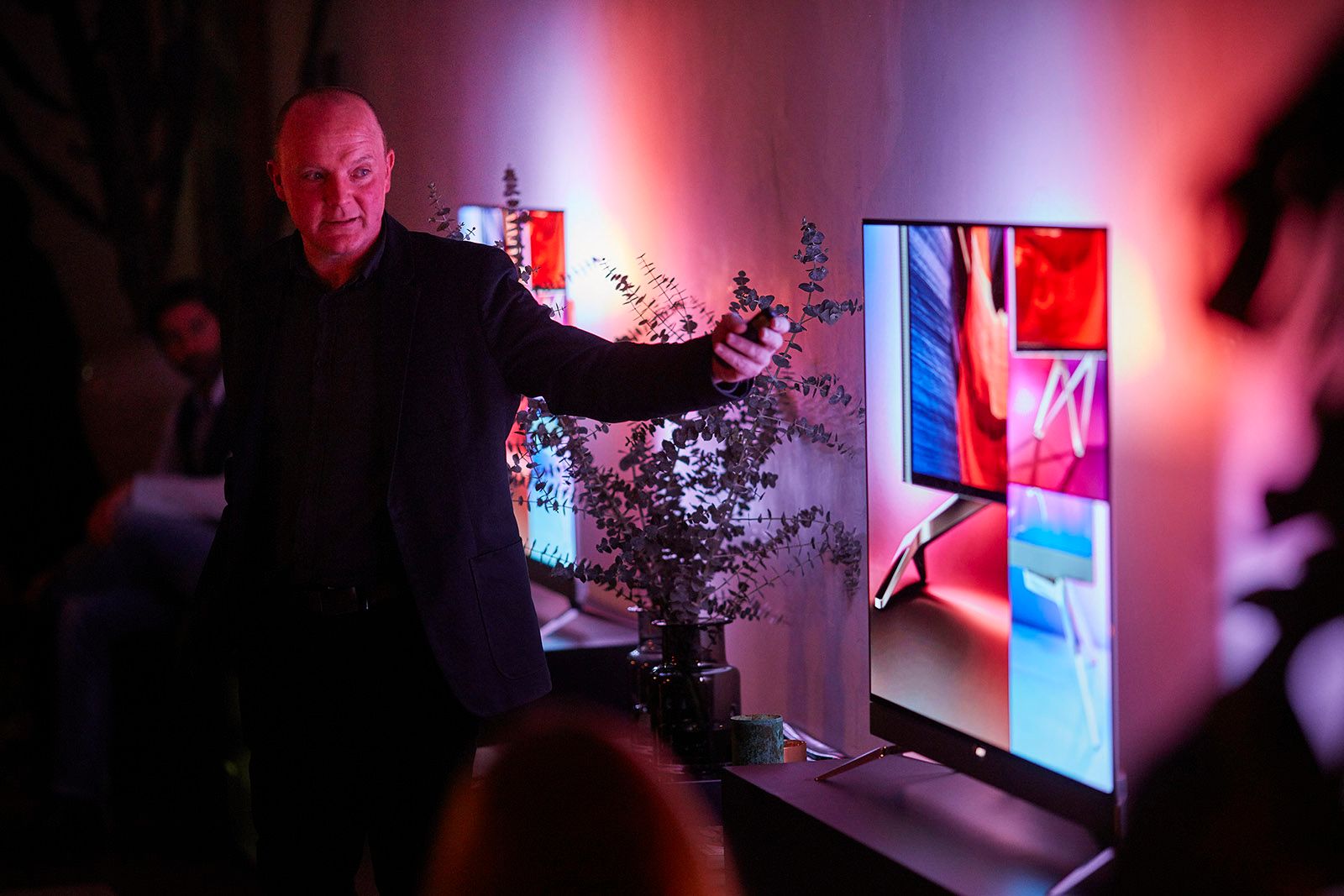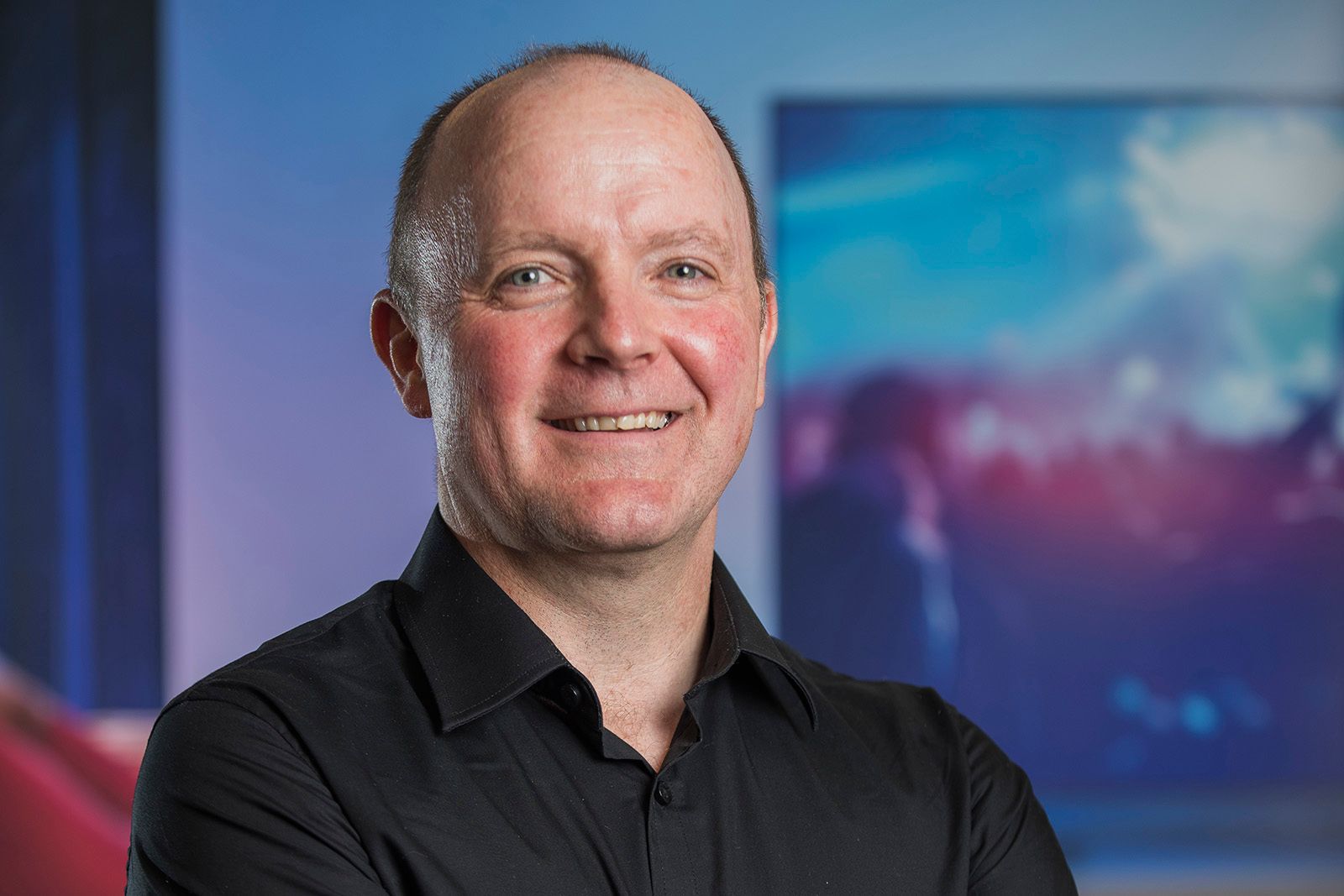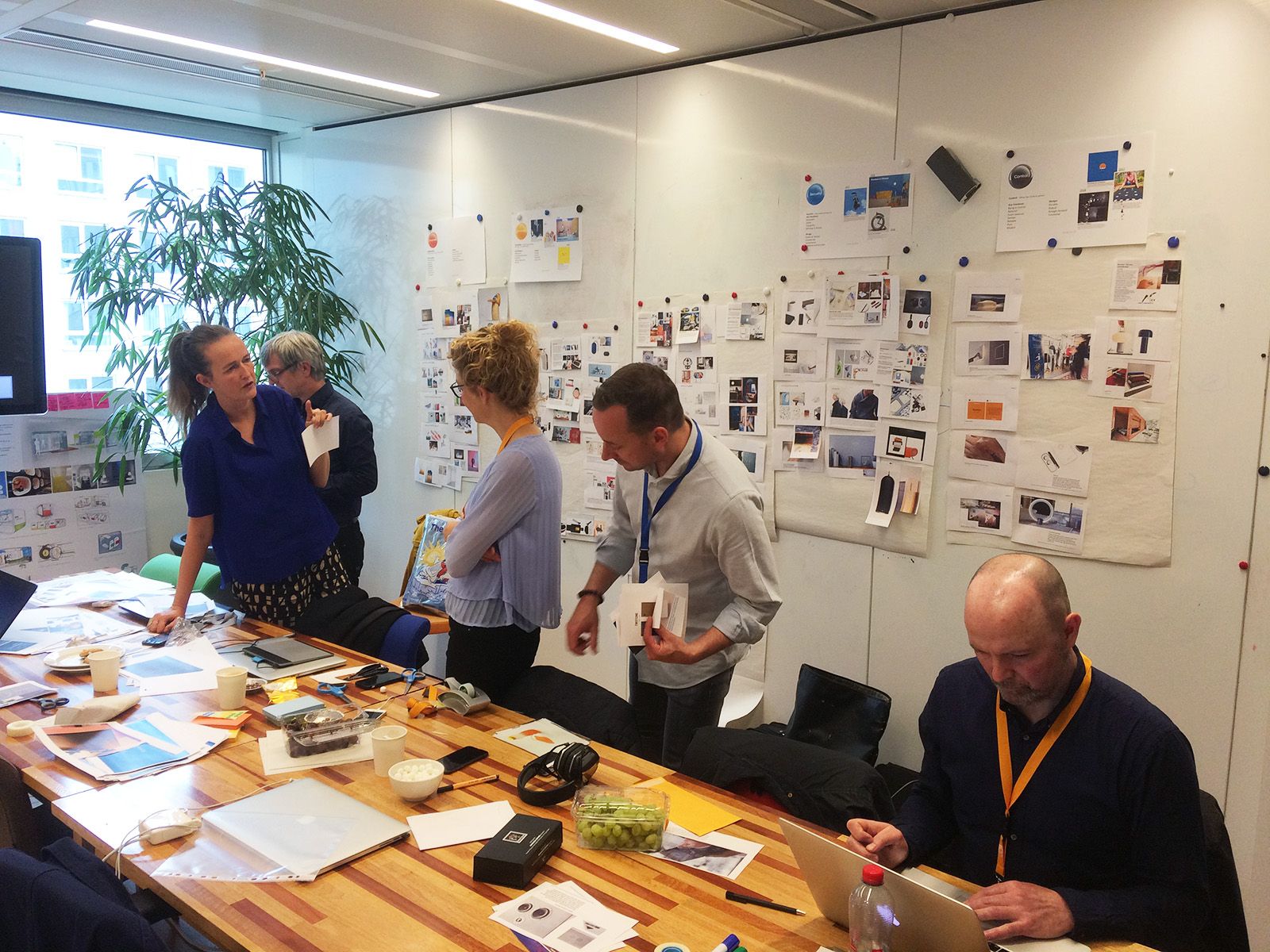Televisions have not only radically changed in performance in recent times, they have also changed in style. Where once we had a massive beast dominating the corner of a living room, we now have a super-slim flatpanel either hanging on a wall or stealthily occupying the rear of a stand.
One thing hasn't changed, however. No matter whether the screen is backed by a myriad of valves and chips, or whether it has the waistline of a supermodel, it has to look as good when switched off than on.
That's where designers come into it. Great TV design equals a great TV. And the Philips brand is out there with the very best.
We spoke to TP Vision's head designer Rob White to find out more about the vital role design plays in moulding Philips' TVs.
Why is design so important for a TV?
TVs are a large part of the living room landscape. The average TV screen size is getting larger, so year by year the need for the design of a TV to fit well into a modern domestic space increases.
Coupled with that, consumers spend a lot of money on their televisions so there is a real need for the TV to give them pride of purchase through the design.
Have TVs changed in their position in society over the years and do you need to take that into consideration?
The TV has played the role of living room hearth for many years and that still remains today. But now, with connected smart functionality, the TV provides information and communication as well as pure entertainment and the user experience needs to express that.
What about the position they now take up in the home, do you have to imagine how a room’s lighting might affect the aesthetic of a telly?
The unique positioning of Philips TV involves not only what we call "European Design" but also Ambilight. Our Philips brand heritage in lighting is visible in the Ambilight of our TVs. And taking into consideration the extended experience of a Philips Hue lighting system connected to Ambilight, it means we design the TV experience taking the full living room environment into consideration.
Has the invention of flatscreen technologies, including the flattest yet in OLED, proved a challenge for TV design?
From a designer's perspective, the emergence of flat TV and now with OLED we have a huge amount of freedom to minimise the display detailing to emphasise that inherent slimness and instead focus the design towards communicating the brand in other details: elements such as the stand, the brand signature, the back cover detailing, the on screen experience and the remote control.
Does OLED itself present a new medium for designers to utilise?
The clear difference that OLED brings to our design team is the extreme slimness of front bezel and thickness which is a real liberation to allow us to create new product archetypes
Where do the speakers come into it? Are today’s modern viewers okay with visible speakers or do they prefer them hidden?
Visible Sound is an interesting topic for TV. Everyone wants the slimmest possible TV but also great sound. For our 2017 range, we have some products with Visible Sound speakers, but for our new OLED TV we have created a proprietary triple ring speaker technology to give excellent sound from a rear position without requiring to be visible from the front.
When you design a TV, do you have to consider how it looks with Ambilight in action too?
Of course. How the TV appears with Ambilight is part of our brief. With bezels becoming slimmer and slimmer, the Ambilight effect is reaching the point of being almost seamless in the way it bleeds off the edge of the screen. We design the bezel to communicate real material but in a non standout way to allow the picture and then the Ambilight to perform.
Are TV designs cyclic? Do we have periods where people prefer black bezels and then periods where silver bezels are better?
For sure, there is a constant swing in consumer electronics from silver to black and back to silver. Currently, we are very much in the metal cycle for premium TV and audio. We need to be aware of that and deliver something fresh within that context to fit the needs of entry and premium products
Can you envisage a time when TVs could look different to what we recognise today? If so, what could be the hypothetical future of TV?
With OLED, we now have a roadmap to transparent screens and with 8K picture quality already partially available, then maximum size with great picture becomes a question of taste rather than technology.
With these emerging realities the potential for especially high-end TV is to become an interior surface rather than a standalone product.




